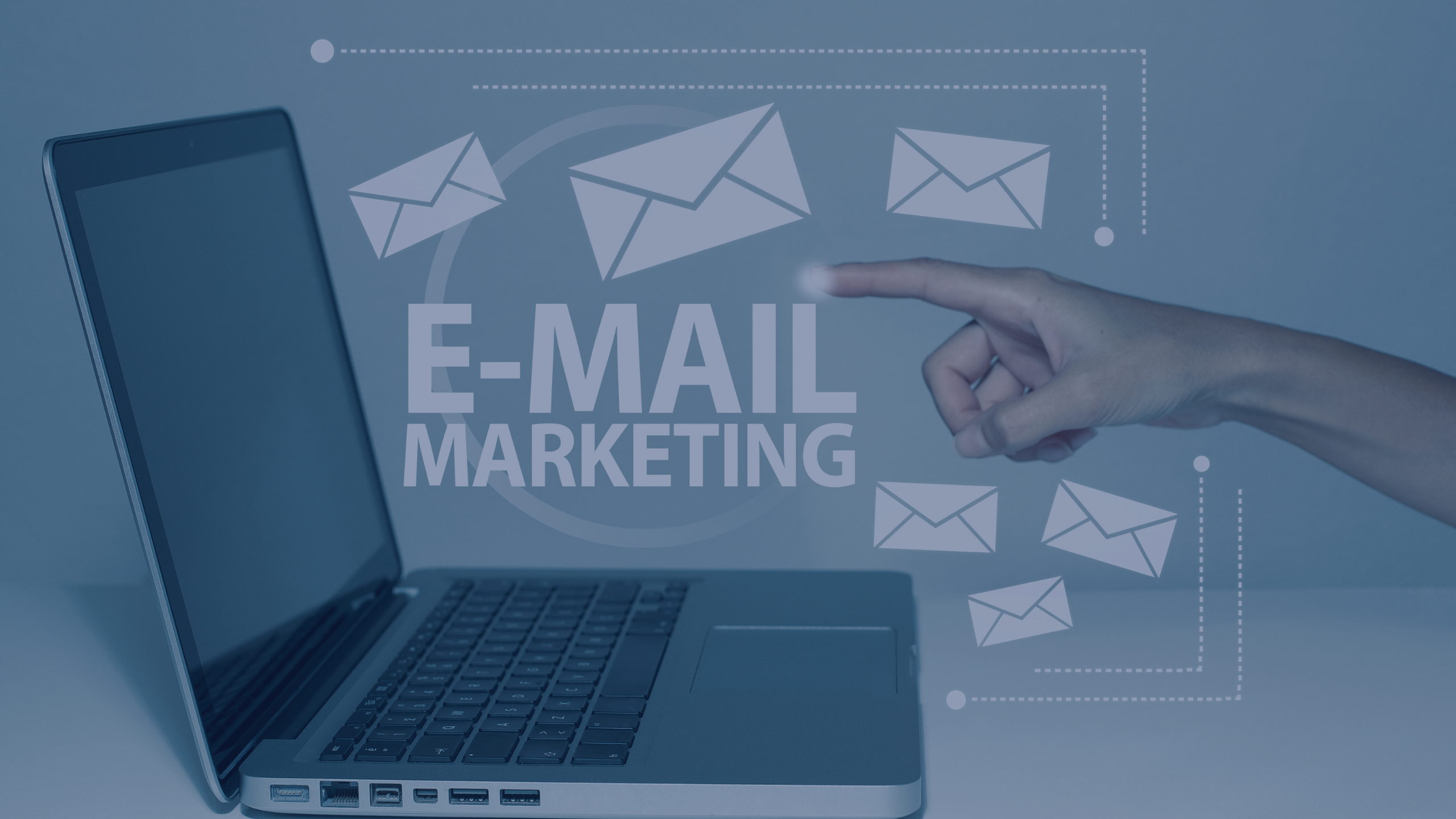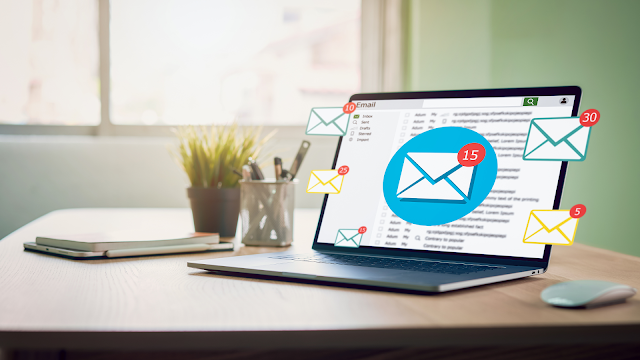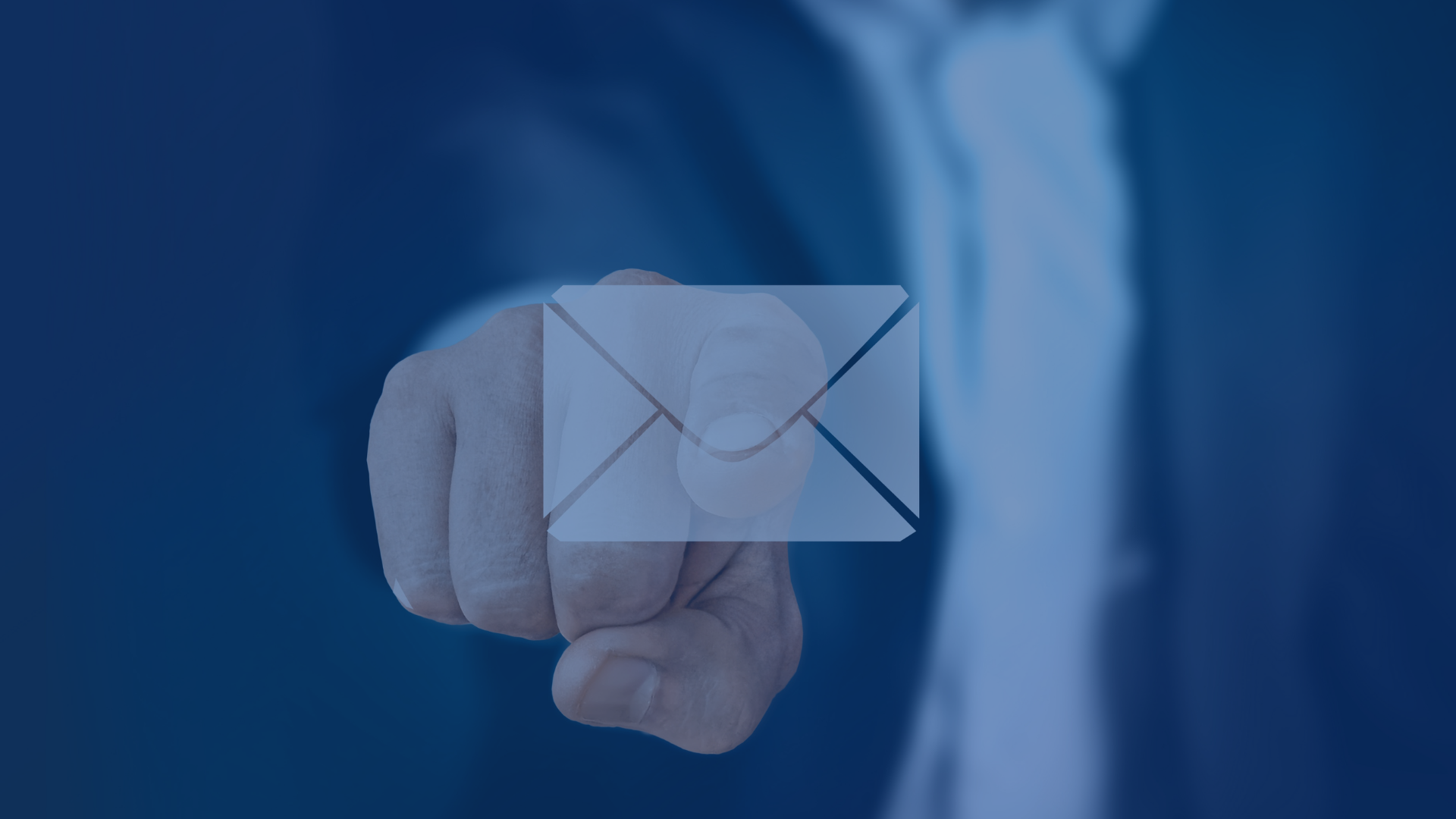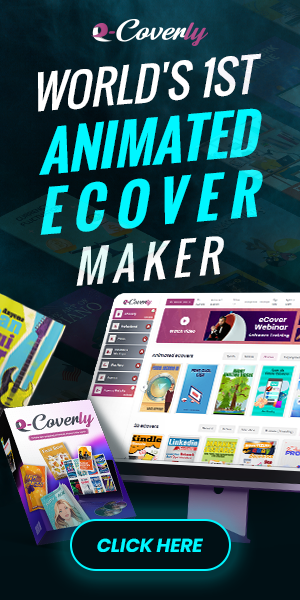From Inbox to Impact: Mastering the Art of Effective Email Marketing
Introduction to Email Marketing
What is Email Marketing?
Email marketing refers to the practice of sending commercial messages or informative content to a group of individuals via email. It is a powerful digital marketing strategy that enables businesses to communicate directly with their target audience, build relationships, and promote products or services.
Importance of Email Marketing
Email marketing holds significant importance in today's digital landscape. It provides businesses with a direct and personalized channel of communication, allowing them to reach their audience effectively. It offers numerous benefits, such as increased brand visibility, customer engagement, lead generation, and higher conversion rates.
Benefits of Email Marketing
Reach: Email marketing allows you to reach a wide audience, including existing customers, potential leads, and interested individuals who have subscribed to your mailing list.
Cost-effective: Compared to traditional marketing channels, email marketing is a cost-effective strategy that offers a high return on investment (ROI).
Personalization: With email marketing, you can tailor your messages to suit the specific needs and interests of your subscribers, creating a personalized experience.
Automation: Email marketing tools enable automation, allowing you to send automated emails based on triggers, customer behavior, or specific events.
Measurable Results: Email marketing provides detailed metrics and analytics that help you track the performance of your campaigns, measure engagement, and make data-driven decisions.
Common Email Marketing Goals
Increasing Sales and Conversions: Many businesses use email marketing as a means to drive sales, promote products, and encourage customers to make purchases.
Building Customer Relationships: Email marketing allows you to nurture relationships with your audience, foster loyalty, and establish trust.
Lead Generation: Email marketing plays a crucial role in capturing leads and converting them into customers through targeted campaigns and lead nurturing strategies.
Brand Awareness: Email marketing helps increase brand visibility by consistently engaging with your audience and sharing valuable content or updates.
Customer Retention: Email marketing is an effective tool for retaining existing customers by providing them with exclusive offers, discounts, or relevant information.
Building a Solid Email List
Importance of a Quality Email List
Building a quality email list is crucial for the success of your email marketing efforts. A high-quality email list consists of engaged subscribers who have willingly opted in to receive your emails. Here's why a quality email list is important:
- Higher Engagement: A quality email list ensures that your messages are reaching people genuinely interested in your content, resulting in higher open and click-through rates.
- Improved Deliverability: Email service providers are more likely to deliver your emails to the inbox when you have an engaged and quality email list, reducing the chances of being marked as spam.
- Increased Conversions: When you have a targeted and interested audience, you have a better chance of converting subscribers into customers or clients.
- Stronger Brand Loyalty: Building a relationship with your subscribers through email marketing can foster brand loyalty and keep your audience engaged with your brand over the long term.
Strategies to Build an Email List
To build a solid email list, you need effective strategies that encourage people to subscribe. Here are five strategies to consider:
Creating Opt-in Forms
Opt-in forms are an essential tool for collecting email addresses. Place them strategically on your website, landing pages, or blog to capture visitor information. Make sure your opt-in forms are visually appealing, concise, and offer a clear value proposition.
Offering Lead Magnets
A lead magnet is a valuable resource or incentive offered in exchange for an email address. It could be an e-book, a whitepaper, a checklist, a webinar, or any other content that aligns with your target audience's interests. Create compelling lead magnets that provide valuable insights or solutions to the subscribers' pain points.
Leveraging Social Media
Utilize your social media channels to promote your email list. Encourage your followers to subscribe by highlighting the benefits they will receive, such as exclusive content, discounts, or insider information. Direct them to your opt-in forms or landing pages to capture their email addresses.
Running Contests or Giveaways
Contests or giveaways can be highly effective in capturing email addresses and increasing engagement. Encourage participants to enter the contest by providing their email addresses. Promote the contest across different platforms and leverage social sharing to expand your reach.
Collaborating with Influencers
Partnering with influencers in your niche can expose your brand to a wider audience and help grow your email list. Collaborate with influencers who align with your brand values and have an engaged following. Offer exclusive content or incentives to their followers to encourage email sign-ups.
Crafting Engaging Email Content
Understanding the Target Audience
To create highly engaging email content, it is essential to have a deep understanding of your target audience. This involves conducting thorough market research and customer analysis to identify their demographics, interests, pain points, and motivations. By gaining insights into your audience's preferences and needs, you can tailor your email content to resonate with them effectively.
Conduct Market Research: Research your target market to gather demographic information such as age, gender, location, and profession. This data will help you create more targeted and relevant content.
Analyze Customer Data: Utilize customer data from previous interactions, purchase history, and website behavior to gain insights into your audience's preferences, interests, and browsing habits.
Create Buyer Personas: Develop detailed buyer personas that represent your target audience segments. These personas should include information such as demographics, goals, challenges, and preferences. Use these personas as a guide when crafting your email content.
Use Surveys and Feedback: Conduct surveys or gather feedback from your subscribers to understand their preferences, pain points, and expectations. This direct feedback will help you create content that addresses their specific needs.
Writing Compelling Subject Lines
Subject lines play a critical role in capturing your subscribers' attention and enticing them to open your emails. Writing compelling subject lines involves using persuasive language and techniques to create curiosity and generate interest.
Keep it Concise: Keep your subject lines short and concise, ideally under 50 characters. This ensures that the entire subject line is visible, especially on mobile devices.
Use Action-Oriented Language: Incorporate action verbs and compelling language to create a sense of urgency or excitement. Encourage your subscribers to take immediate action or highlight the benefit they will gain from opening the email.
Ask Intriguing Questions: Pose questions that pique curiosity or address a specific pain point. Questions can stimulate your subscribers' interest and compel them to open the email to find the answer.
Personalization: Whenever possible, personalize subject lines by including the recipient's name or referencing their previous interactions or purchase history. Personalization can help grab attention and create a sense of relevance.
A/B Testing: Experiment with different subject lines to identify the most effective ones. A/B testing allows you to compare open rates and click-through rates for different subject lines, helping you refine your approach over time.
Personalization and Segmentation
Personalization and segmentation are key strategies to make your email content more relevant and engaging. By segmenting your email list based on specific characteristics or behaviors, you can send targeted content that resonates with each segment's unique needs and interests.
Demographic Segmentation: Segment your email list based on demographic factors such as age, gender, location, or occupation. This allows you to deliver content that is tailored to the specific characteristics of each segment.
Behavioral Segmentation: Analyze your subscribers' behavior, including previous interactions, browsing history, or purchase behavior. Segment your list based on their engagement levels, preferences, or buying patterns. This enables you to send personalized emails that align with their interests and needs.
Personalized Recommendations: Leverage data on your subscribers' previous purchases or browsing behavior to provide personalized product recommendations. Tailor your email content to showcase products or services that are relevant to each subscriber's preferences.
Dynamic Content: Use dynamic content in your emails to show different variations of content based on segmentation criteria. This allows you to customize the email experience for each subscriber, increasing engagement and relevance.
Using Persuasive Copywriting Techniques
Persuasive copywriting techniques can significantly enhance the effectiveness of your email content. By employing these techniques, you can create compelling narratives, evoke emotions, and drive action among your subscribers.
Storytelling: Incorporate storytelling elements into your email content to captivate your readers. Tell stories that resonate with their experiences, challenges, or aspirations. Stories create a connection, engage emotions, and make your content more memorable.
Emotional Appeals: Triggering emotions in your email content can be highly persuasive. Identify the emotional triggers that resonate with your target audience and use them strategically in your copy. Emotions such as joy, fear, curiosity, or empathy can drive engagement and motivate action.
Social Proof: Include social proof elements in your emails to establish credibility and trust. Testimonials, reviews, ratings, or success stories can showcase the positive experiences of your customers and validate the value of your offerings. Social proof reassures your subscribers and encourages them to take action.
Urgency and Scarcity: Incorporate urgency and scarcity tactics to create a sense of FOMO (fear of missing out) among your subscribers. Limited-time offers exclusive discounts, or limited stock availability can create a sense of urgency and prompt immediate action. Clearly communicate the urgency or scarcity in your email content to drive engagement and conversions.
Call-to-Action (CTA): Craft clear and compelling CTAs that guide your subscribers toward the desired action. Use action-oriented language, such as "Shop Now," "Download Now," or "Register Today." Place the CTA strategically within the email, making it prominent and easy to locate.
Designing Effective Email Templates
Importance of Email Design
The design of your email templates plays a crucial role in capturing your subscribers' attention, conveying your message effectively, and driving engagement. A well-designed email template enhances the overall user experience, increases the readability of your content, and improves the likelihood of recipients taking the desired action.
Best Practices for Email Template Design
To create effective email templates, consider the following best practices:
Mobile Responsiveness
With the majority of emails being opened on mobile devices, it is essential to ensure that your email templates are mobile-responsive. Optimize your templates to adapt seamlessly to different screen sizes, ensuring that the content remains clear, readable, and visually appealing across devices.
Clear and Concise Layout
Design your email templates with a clear and concise layout that guides readers through the content effortlessly. Use sections, headings, and visual hierarchy to break down the information into easily digestible chunks. Avoid cluttered designs and excessive text, as they can overwhelm readers and reduce engagement.
Use of Visuals and Branding
Incorporate visually appealing elements into your email templates to enhance their overall look and feel. Use images, graphics, or icons that align with your brand's visual identity and resonate with your target audience. Ensure that the visuals are optimized for quick loading times and support the message you want to convey.
Call-to-Action Placement
Strategically place your call-to-action (CTA) buttons within your email templates to maximize their visibility and encourage click-throughs. Make the CTAs stand out by using contrasting colors, compelling copy, and clear directives. Position them prominently within the email, ensuring they are easily accessible without the need for excessive scrolling.
Consistent Branding
Maintain consistency in your email template design to reinforce your brand identity. Use consistent color schemes, fonts, and imagery that align with your brand's visual guidelines. This consistency builds familiarity and trusts with your subscribers, enhancing brand recognition and engagement.
Use White Space
Incorporate ample white space in your email templates to provide visual breathing room and improve readability. White space helps to focus attention on the key elements, enhances the overall aesthetics, and makes your email content more scannable.
Test and Optimize
Regularly test and optimize your email templates to ensure they are performing effectively. Use A/B testing to compare different design elements, such as colors, layouts, or CTAs, to identify the most impactful variations. Analyze metrics such as open rates, click-through rates, and conversions to make data-driven decisions and improve your templates over time.
Automation and Personalization
Benefits of Email Automation
Email automation offers numerous benefits for efficient and effective communication with your subscribers. By automating certain aspects of your email marketing campaigns, you can save time, increase scalability, and deliver personalized experiences. Some key benefits include:
Time and Resource Efficiency: Automation saves time and effort by streamlining repetitive tasks such as sending welcome emails, abandoned cart reminders, or follow-up sequences. This allows you to focus on other important aspects of your business while maintaining consistent and timely communication with your subscribers.
Consistency: Automated email campaigns ensure consistent messaging and timely delivery, reducing the risk of human error and maintaining a professional image. Whether you have a small subscriber list or a large one, automation ensures that every subscriber receives the same level of attention and engagement.
Scalability: With automation, you can easily scale your email marketing efforts as your subscriber base grows. Automated campaigns can handle large volumes of emails without compromising quality or personalization. This scalability allows you to nurture relationships with your subscribers as your business expands.
Improved Engagement: Automation enables you to send relevant and timely emails based on customer behavior. By leveraging automation tools and data, you can segment your audience and deliver targeted messages that resonate with their specific interests, preferences, and buying habits. This level of personalization increases engagement and builds stronger relationships with your subscribers.
Types of Automated Email Campaigns
Implementing different types of automated email campaigns can enhance customer interactions and drive desired actions. Here are some examples:
Welcome Emails: Send a series of welcome emails to new subscribers to introduce your brand, set expectations, and provide valuable information. Welcome emails can help create a positive first impression, establish a connection with your audience, and encourage engagement from the start.
Abandoned Cart Emails: Remind customers who have abandoned their shopping carts to complete their purchases. These emails can include personalized product recommendations, discounts, or incentives to entice customers back and encourage conversion. Abandoned cart emails have proven to be effective in recovering lost sales and increasing overall revenue.
Birthday or Anniversary Emails: Show your customers that you value them by sending personalized emails to celebrate their birthdays or anniversaries with your brand. These emails can include exclusive offers, discounts, or freebies as a token of appreciation. Birthday or anniversary emails create a sense of personal connection and can foster customer loyalty.
Re-engagement Emails: Target inactive subscribers with re-engagement emails to win back their attention and interest. These emails can offer special promotions, personalized content, or surveys to understand their needs and preferences. Re-engagement emails are an opportunity to reconnect with subscribers who may have lost interest and encourage them to re-engage with your brand.
Personalization Strategies
Personalization is a powerful strategy to deliver tailored content and enhance customer experience. By leveraging data and automation tools, you can create highly personalized email campaigns. Here are some personalization strategies for your email campaigns:
Dynamic Content: Use dynamic content to customize emails based on recipient attributes, preferences, or behaviors. Dynamic content allows you to display different variations of content within the same email, making it more relevant and engaging. For example, you can showcase product recommendations based on a customer's browsing history or previous purchases.
Behavioral Triggers: Set up automated emails triggered by specific customer behaviors or actions. For example, you can send a follow-up email after a customer makes a purchase, thanking them and offering related products or services. You can also send re-engagement emails to subscribers who haven't opened or clicked on your emails in a certain period. Behavioral triggers ensure timely and relevant communication, increasing the chances of engagement.
Segmentation: Divide your email list into segments based on specific criteria such as demographics, interests, or purchase history. This allows you to send targeted emails to each segment, addressing their unique needs and preferences. Segmentation enhances the relevance of your emails and increases engagement. For example, you can send exclusive offers to a segment of customers who have previously made high-value purchases.
Personalized Recommendations: Leverage data and automation to provide personalized product or content recommendations in your emails. Analyze customer behavior and preferences to offer relevant suggestions that align with their interests. Personalized recommendations demonstrate that you understand your customers and can help them discover new products or content they may be interested in.
Triggered Follow-ups: Set up triggered follow-up emails based on specific actions taken by customers. For example, if a customer downloads a free resource from your website, you can automatically send a follow-up email with additional resources or information related to their download. Triggered follow-ups provide timely and valuable content to customers, nurturing the relationship and guiding them further along the customer journey.
Optimizing Email Deliverability
Understanding Email Deliverability
Email deliverability is the measure of how successfully your emails reach the recipient's inboxes. It's crucial to understand the factors that affect deliverability to ensure your emails are delivered effectively and reach your intended audience.
Factors Affecting Email Deliverability
Several factors can impact email deliverability. Being aware of these factors allows you to proactively address any potential issues. Here are some key factors to consider:
Sender Reputation: The reputation of your sending domain and IP address plays a significant role in email deliverability. Email service providers (ESPs) and mailbox providers assess the reputation of the sender to determine whether to deliver the email to the inbox, divert it to the spam folder, or block it entirely.
Email Content and Formatting: The content and formatting of your emails can influence deliverability. Emails that contain spam trigger words, excessive use of capital letters, misleading subject lines, or poor HTML coding may trigger spam filters or be flagged as suspicious.
Subscriber Engagement: The engagement level of your subscribers also affects deliverability. Email providers consider metrics such as open rates, click-through rates, and spam complaints as indicators of subscriber engagement. Low engagement may lead to your emails being filtered out or delivered to the spam folder.
Best Practices to Improve Deliverability
To optimize email deliverability and increase the chances of your emails reaching the inbox, follow these best practices:
Using a Reliable Email Service Provider: Choose a reputable email service provider (ESP) with a strong track record of deliverability. A reliable ESP will have established relationships with major mailbox providers, ensuring that your emails have a higher chance of reaching the inbox.
Authentication and Authentication: Implement email authentication protocols such as SPF (Sender Policy Framework), DKIM (DomainKeys Identified Mail), and DMARC (Domain-based Message Authentication, Reporting, and Conformance). These protocols verify the authenticity and integrity of your emails, building trust with mailbox providers and reducing the likelihood of your emails being marked as spam.
Maintaining a Healthy Email List: Regularly clean your email list to remove inactive or invalid email addresses. High bounce rates and spam complaints can negatively impact deliverability. Additionally, implement a double opt-in process to ensure that subscribers are genuinely interested in receiving your emails, reducing the chances of spam complaints.
Testing and Monitoring: Regularly test your emails across different email clients and devices to ensure they render correctly. Monitor key deliverability metrics such as bounce rates, open rates, click-through rates, and spam complaints to identify any issues and take corrective actions promptly.
Analyzing Email Campaign Performance
Tracking and Measuring Email Metrics
To evaluate the success of your email campaigns and make data-driven decisions, it's essential to track and measure key email metrics. Here are some important metrics to monitor:
Open Rates: Open rates indicate the percentage of recipients who open your emails. It provides insights into the effectiveness of your subject lines, email content, and sender reputation. Higher open rates generally indicate that your emails are compelling and engaging.
Click-through Rates: Click-through rates measure the percentage of recipients who click on links within your emails. It helps you assess the relevance and effectiveness of your email content, calls to action, and overall engagement. Higher click-through rates suggest that your emails are driving interest and encouraging recipients to take action.
Conversion Rates: Conversion rates track the percentage of recipients who complete a desired action after clicking through your emails, such as making a purchase, filling out a form, or signing up for a webinar. Conversion rates reflect the effectiveness of your email campaigns in achieving specific goals. Improving conversion rates involves optimizing landing pages, calls to action, and the overall user experience.
Unsubscribe Rates: Unsubscribe rates indicate the percentage of recipients who choose to unsubscribe from your email list after receiving a particular campaign. Monitoring unsubscribe rates helps you gauge the relevance and value of your emails to your audience. High unsubscribe rates may indicate a need for refining your email content, targeting, or frequency.
Email Analytics Tools and Platforms
To track and analyze email metrics effectively, leverage email analytics tools and platforms. These tools provide detailed insights into your email campaigns and allow you to measure and monitor key metrics. Some popular email analytics tools include:
Google Analytics: Integrating Google Analytics with your email campaigns enables you to track conversions, website traffic, and user behavior resulting from email interactions.
Email Service Provider Analytics: Most email service providers offer built-in analytics features that provide valuable data on email performance, subscriber engagement, and deliverability metrics. These analytics tools allow you to measure key metrics and optimize your campaigns within the same platform.
Third-Party Analytics Tools: There are various third-party email analytics tools available that provide advanced tracking capabilities, heatmaps, A/B testing, and detailed reporting. These tools offer in-depth insights into email performance and user behavior to help you make informed decisions.
Interpreting Data and Making Improvements
Interpreting email data and making data-driven improvements are crucial for optimizing your email marketing efforts. Here are some strategies to consider:
A/B Testing: Conduct A/B tests to experiment with different elements of your emails, such as subject lines, call-to-action buttons, layouts, or personalization. Analyze the results to identify the most effective strategies for improving email performance.
Segmentation and Personalization: Analyze email data to identify trends and preferences among different segments of your audience. Use this information to create more targeted and personalized email campaigns that resonate with specific segments.
Content Optimization: Analyze the performance of your email content to identify what resonates best with your audience. Test different content formats, storytelling techniques, visuals, and value propositions to optimize engagement and conversions.
Continuous Monitoring and Optimization: Regularly monitor and analyze email metrics to identify patterns, trends, and areas for improvement. Use this data to refine your email strategies, optimize campaigns, and maximize results over time.
Integrating Email Marketing with Other Channels
Email and Social Media Integration
Integrating email marketing with social media can enhance your marketing efforts and increase your reach. Here's how you can integrate email and social media:
Cross-Promotion: Include social media icons and links in your email campaigns, encouraging subscribers to follow and engage with your brand on social platforms. Likewise, promote your email newsletter on social media to encourage sign-ups and expand your subscriber base.
Shareable Content: Create compelling and shareable content in your emails that subscribers can easily share on their social media profiles. This can help increase brand visibility, drive website traffic, and attract new subscribers.
Social Media Contests: Run contests or giveaways on social media, and promote them through email campaigns. Encourage subscribers to participate by sharing their email addresses or engaging with your brand on social media. This integration fosters cross-channel engagement and expands your reach.
Email and Content Marketing Integration
Integrating email marketing with content marketing allows you to deliver valuable content directly to your subscribers. Here are some ways to integrate email and content marketing:
Newsletter Subscriptions: Offer a newsletter subscription on your content marketing platform, such as your blog or resource hub. This enables visitors to sign up and receive your content directly in their inbox, increasing engagement and nurturing leads.
Content Promotion: Use email campaigns to promote your latest blog posts, articles, videos, or other content assets. Provide teasers and compelling snippets to entice subscribers to click through and consume your valuable content.
Drip Campaigns: Create email drip campaigns that deliver a series of content pieces to subscribers over time. This helps educate and nurture leads, guiding them through the customer journey while building trust and credibility.
Email and Customer Relationship Management (CRM)
Integrating email marketing with your customer relationship management (CRM) system allows for more personalized and targeted communication. Consider the following integration strategies:
Segmentation and Personalization: Utilize CRM data to segment your email list based on customer attributes, preferences, or purchase history. Leverage this data to personalize email content and deliver targeted campaigns that resonate with specific customer segments.
Customer Lifecycle Nurturing: Map out customer journeys within your CRM system and create automated email campaigns that align with different stages of the customer lifecycle. This ensures timely and relevant communication, strengthening customer relationships and driving conversions.
Data Syncing: Integrate your email marketing platform with your CRM system to sync important customer data, such as contact information, purchase history, or engagement metrics. This ensures that you have up-to-date and comprehensive customer data for effective targeting and personalization.
Email and E-commerce Platforms
Integrating email marketing with your e-commerce platform enables you to drive sales, increase customer loyalty, and enhance the overall shopping experience. Consider the following integration strategies:
Abandoned Cart Recovery: Set up automated email campaigns to remind customers who have abandoned their shopping carts to complete their purchases. Include personalized product recommendations and limited-time offers to incentivize conversions.
Order Confirmations and Receipts: Automatically send order confirmations and receipts via email to customers after they make a purchase. Use this opportunity to upsell or cross-sell related products, request reviews, or provide helpful post-purchase information.
Product Recommendations: Leverage customer data and purchase history to send personalized product recommendations via email. Tailor recommendations based on customers' browsing and purchasing behavior to increase cross-selling and upselling opportunities.
Post-Purchase Follow-ups: Send follow-up emails after customers have made a purchase to express gratitude, request feedback, and encourage repeat purchases. This helps foster customer loyalty and strengthens the relationship with your brand.
Email Marketing Best Practices
Avoiding Common Email Marketing Mistakes
To maximize the effectiveness of your email marketing campaigns, it's essential to avoid common mistakes that can hinder your success. Here are some best practices to consider:
Permission-based Marketing: Only send emails to individuals who have given explicit permission to receive them. Avoid purchasing email lists or engaging in unsolicited email marketing practices, as this can damage your reputation and lead to high unsubscribe rates.
Proper List Management: Regularly clean and update your email list to remove inactive or invalid email addresses. Maintain good list hygiene to improve deliverability and engagement rates.
Clear and Compelling Subject Lines: Craft subject lines that are concise, engaging, and accurately reflect the content of your email. Avoid misleading or spammy subject lines that may result in lower open rates or trigger spam filters.
Honing the Art of Email Copywriting
The success of your email marketing campaigns relies heavily on persuasive and compelling copywriting. Consider these best practices for effective email copy:
Engaging Opening Lines: Hook your readers from the start with a captivating opening line that sparks curiosity or addresses a pain point. Make it compelling enough to encourage recipients to continue reading.
Concise and Scannable Content: Keep your email content concise and easy to skim. Use short paragraphs, bullet points, and subheadings to break up the text and make it more digestible.
Clear Call-to-Action (CTA): Clearly communicate the desired action you want your recipients to take. Use a prominent CTA button or link that stands out and encourages clicks. Make the CTA copy compelling and action-oriented.
Personalization and Segmentation: Personalize your emails by addressing recipients by name and tailoring the content based on their preferences or behavior. Segment your email list to send targeted messages that resonate with specific groups.
Staying Compliant with Email Regulations and Laws
To maintain a good reputation and comply with regulations, it's important to adhere to email marketing laws and guidelines. Here are some best practices for staying compliant:
Permission-based Marketing: Obtain consent from recipients before adding them to your email list. Provide clear information about what they can expect to receive and give them the option to unsubscribe easily.
Unsubscribe Mechanism: Include a visible and functional unsubscribe link in every email. Honor unsubscribe requests promptly to respect recipients' preferences and comply with regulations such as the CAN-SPAM Act and GDPR.
Privacy and Data Protection: Safeguard subscriber data and ensure compliance with data protection laws. Implement appropriate security measures to protect personal information and follow data handling best practices.
A/B Testing and Continuous Improvement
To optimize your email marketing efforts, embrace a culture of continuous improvement. Utilize A/B testing to experiment with different elements and strategies. Here are some areas to focus on:
Subject Lines and Preheaders: Test different subject lines and preheader text to identify what resonates best with your audience. Measure open rates and engagement to determine the most effective approaches.
Email Design and Layout: Experiment with various email templates, visuals, and layouts to identify what drives higher click-through rates and conversions. Test different formats, colors, and placements of elements like CTAs and images.
Call-to-Action Optimization: Test different copies, colors, sizes, and placements of your CTAs to maximize click-through rates. Analyze conversion rates to identify the most effective CTAs that drive desired actions.
Timing and Frequency: Test different days of the week and times of day to determine when your emails generate the highest engagement. Find the optimal sending frequency that maintains subscriber interest without overwhelming them.
Frequently Asked Questions (FAQs)
What is the best time to send emails?
The best time to send emails can vary depending on your target audience and industry. Generally, it's recommended to test different send times to determine when your subscribers are most likely to engage. Consider factors such as time zones, work schedules, and customer behavior to find the optimal sending time.
How often should I send emails to my subscribers?
The frequency of your email campaigns depends on your audience preferences and the nature of your content. It's important to maintain a consistent schedule without overwhelming your subscribers. Test different frequencies and monitor engagement rates to strike the right balance.
How can I increase my email open rates?
To increase email open rates, focus on crafting compelling subject lines that pique curiosity and accurately represent the content of your emails. Personalize your subject lines when possible, and consider using urgency or curiosity-inducing words. Segmenting your email list and delivering targeted content can also improve open rates.
What is the ideal length for an email newsletter?
The ideal length for an email newsletter depends on the content and the preferences of your subscribers. In general, it's best to keep your newsletters concise and scannable. Aim for a length that delivers the necessary information while maintaining reader engagement. Break up the content with headings, bullet points, and visuals to enhance readability.
How can I avoid my emails going to the spam folder?
To avoid emails being marked as spam, follow these practices:
- Use a reputable email service provider with good deliverability rates.
- Ensure your subscribers have opted in to receive your emails.
- Avoid using spam trigger words, excessive punctuation, or excessive capitalization in your subject lines and content.
- Regularly clean your email list to remove inactive or invalid email addresses.
- Authenticate your emails with SPF, DKIM, and DMARC protocols.
- Monitor your email deliverability and reputation through email analytics tools.
How do I build an engaged email list?
To build an engaged email list, employ the following strategies:
- Offer valuable incentives, such as exclusive content or discounts, to encourage sign-ups.
- Use compelling opt-in forms and landing pages to capture visitors' email addresses.
- Leverage social media platforms to promote your email list and encourage sign-ups.
- Run contests or giveaways where participants need to provide their email addresses.
- Collaborate with influencers or industry partners to reach a wider audience.
Can I use emojis in my email subject lines?
Yes, using emojis in email subject lines can add visual appeal and help your emails stand out in crowded inboxes. However, use emojis sparingly and ensure they are relevant to the content and tone of your email. Test the effectiveness of emojis with your specific audience and monitor the impact on open rates.
What is the role of email segmentation in marketing?
Email segmentation involves dividing your email list into distinct segments based on specific criteria, such as demographics, preferences, or purchase behavior. Segmentation allows you to deliver more targeted and relevant content to each segment, resulting in higher engagement, improved open and click-through rates, and better overall campaign performance.
How can I effectively use personalization in my emails?
Personalization is a powerful email marketing strategy. To effectively use personalization, consider the following:
- Address subscribers by their name in the email.
- Utilize dynamic content to tailor the message based on subscriber preferences or behavior.
- Segment your email list to send targeted emails that resonate with specific groups.
- Leverage data such as purchase history or browsing behavior to recommend relevant products or content.
- Use personalization tokens to insert custom fields dynamically, making the email feel more personalized.
What are the key email metrics I should track?
Key email metrics to track include:
- Open Rates: The percentage of recipients who open your emails.
- Click-through Rates: The percentage of recipients who click on links within your emails.
- Conversion Rates: The percentage of recipients who complete a desired action, such as making a purchase or filling out a form.
- Unsubscribe Rates: The percentage of recipients who unsubscribe from your emails.
- Bounce Rates: The percentage of emails that are not delivered successfully.
- Spam Complaints: The number of recipients who mark your email as spam.
- ROI: The return on investment from your email marketing efforts.
Monitoring and analyzing these metrics will provide valuable insights into the effectiveness of your email campaigns and help guide your optimization efforts.
Email marketing continues to be a powerful and effective tool for businesses to connect with their audience, nurture relationships, and drive valuable actions. By implementing the strategies and best practices discussed in this comprehensive guide, you can unlock the true potential of email marketing and achieve remarkable results.
We began by understanding the fundamentals of email marketing, its importance, and the various goals it can help you accomplish. Building a solid email list was highlighted as a crucial step, emphasizing the significance of a quality email list and providing actionable strategies to grow your subscriber base.
Crafting engaging email content was explored in detail, covering aspects such as understanding your target audience, writing compelling subject lines, leveraging personalization and segmentation, and utilizing persuasive copywriting techniques to captivate readers and drive desired actions.
Designing effective email templates was emphasized, emphasizing the importance of email design, along with best practices such as mobile responsiveness, clear and concise layouts, and the use of visuals and branding to create visually appealing and impactful emails.
Automation and personalization were discussed as essential components of successful email marketing, exploring the benefits of email automation and showcasing various types of automated email campaigns. The importance of personalization strategies such as dynamic content, behavioral triggers, and segmentation was also emphasized.
Optimizing email deliverability is critical for ensuring that your emails reach the intended recipients' inboxes. We discussed the factors affecting deliverability and provided best practices to improve it, such as using reliable email service providers, authentication protocols, maintaining a healthy email list, and regular testing and monitoring.
Analyzing email campaign performance allows you to measure the success of your efforts. We explored the key email metrics to track, such as open rates, click-through rates, conversion rates, and unsubscribe rates. Additionally, we highlighted the importance of email analytics tools and platforms in gathering and interpreting data to make informed improvements.
Integrating email marketing with other channels was emphasized, showcasing the synergies between email and social media, content marketing, customer relationship management (CRM), and e-commerce platforms. By combining these channels, you can amplify your reach and engagement, creating cohesive and impactful marketing strategies.
To wrap up, we delved into email marketing best practices, addressing common mistakes to avoid, honing the art of email copywriting, staying compliant with email regulations and laws, and the importance of A/B testing and continuous improvement to optimize your campaigns.
By following these guidelines and continuously refining your email marketing strategies, you can build strong connections with your audience, drive conversions, and achieve your marketing objectives. Remember, email marketing is a dynamic and evolving field, so staying up-to-date with industry trends and adapting to the changing landscape will ensure your continued success in the realm of email marketing.
Now, armed with the knowledge and insights gained from this comprehensive guide, it's time to unleash the power of effective email marketing and propel your business to new heights of success. Start implementing these strategies today and watch as your email campaigns become powerful tools for growth, engagement, and customer loyalty.




.png)

.png)
.png)








